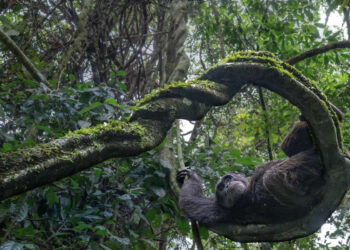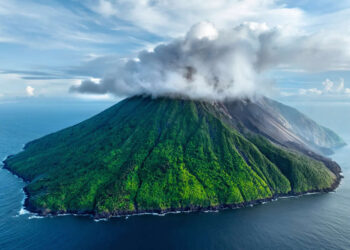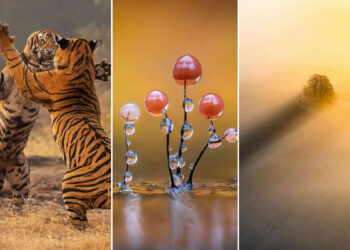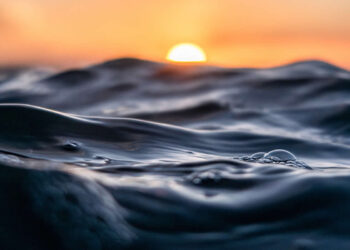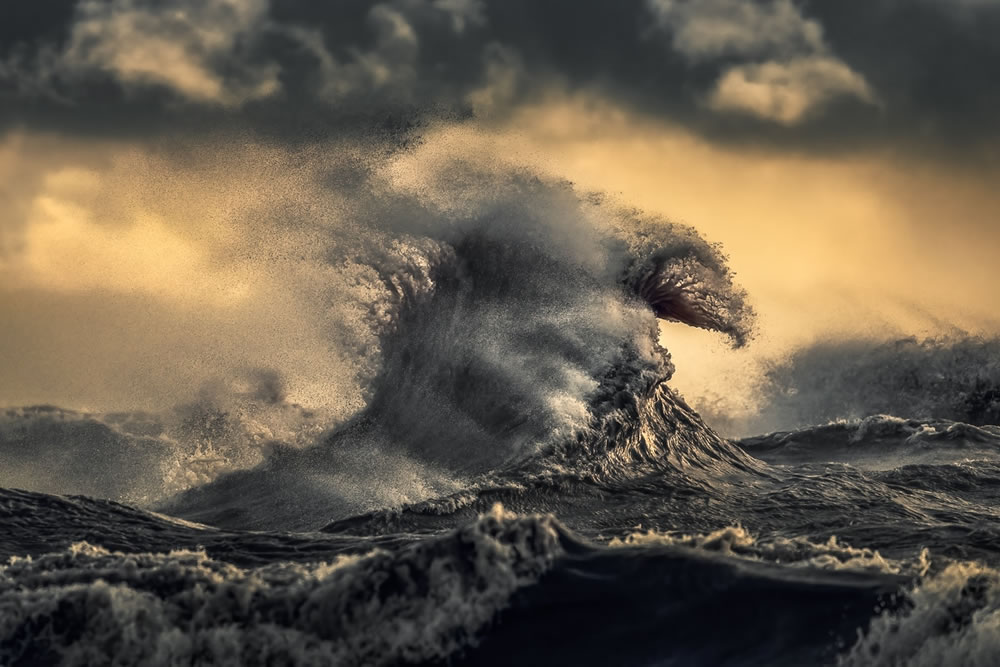Here are the heart touching winning photos of the Mangrove Photography Awards 2023. Each passing year, the creative community astounds us anew with their extraordinary captures, shedding light on the people and wildlife dependent on mangrove forests. Through their lens, they unveil the perils these vital ecosystems confront, emphasizing the pressing need for swift and decisive action in their defense.
This year’s awards stand as a testament to unparalleled diversity, with over 2,000 entries from 72 nations globally, illustrating the profound beauty and global importance of mangrove ecosystems.
In this edition, the prestigious title of Mangrove Photographer of the Year has been bestowed upon Soham Bhattacharyya for his remarkable image, ‘The Finest “Flower” of the Mangroves.’ This extraordinary shot freezes in time the inquisitive gaze of a young, endangered tigress in the Sundarbans Biosphere Reserve.
Furthermore, winners have been honored across six distinct categories – People, Landscape, Underwater, Threats, Wildlife, and Stories (a portfolio category) – and young photographers under the age of 24 competed fiercely to claim the coveted title of Young Mangrove Photographer of the Year.
These photographs serve as poignant reminders of the mangroves’ significance, showcasing the rich tapestry of life along our coastlines. Through the lens of these photographers, we witness the intricate relationships and fleeting moments within mangrove ecosystems, both above and beneath the water’s surface. Simultaneously, they serve as a stark and urgent call to action, compelling us to safeguard these exceptional and invaluable ecosystems.
Scroll down and inspire yourself. You can check their website for more information.
You can find more info about Mangrove Photography Awards:
#1. Mangrove Photographer of the Year: The Finest “Flower” of the Mangroves by Soham Bhattacharyya
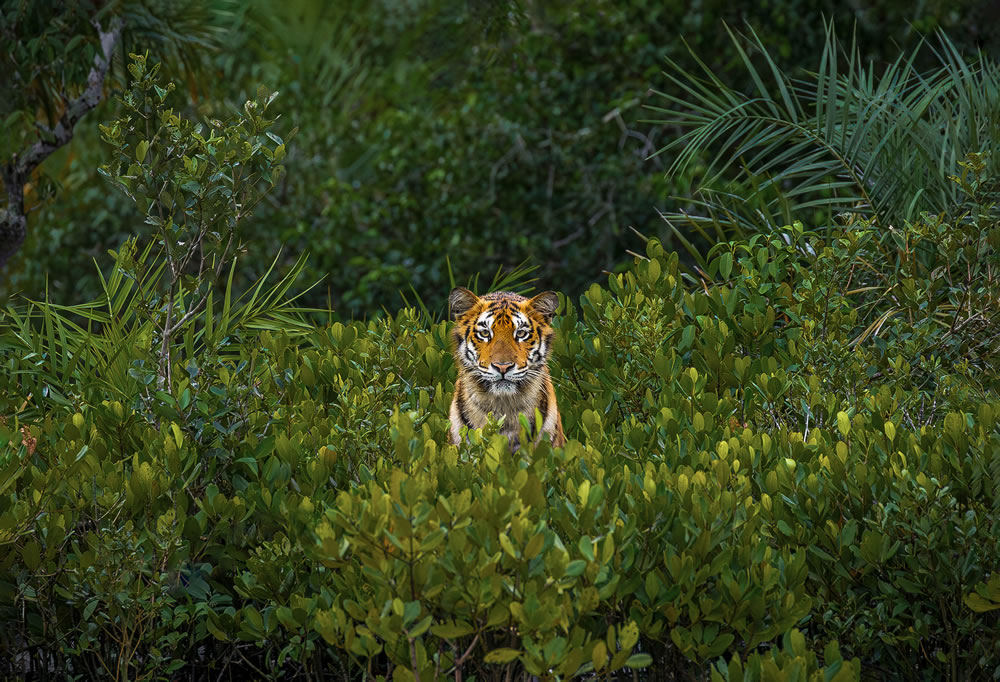
‘The Finest “Flower” of the Mangroves’ captures a heart-warming image of a young Royal Bengal tigress through the mangrove bushes of a fragile natural wonder.
There are perhaps only 200 of these magnificent animals in the Sundarbans mangrove forest. According to the last survey conducted in 2018, there were 114 tigers in the Bangladesh portion of the Sundarbans. West Bengal Forest Department recent tiger estimation exercise for 2020-21, puts the number of big cats in the region at 96. These iconic and endangered Bengals are the only tigers adapted to live in a mangrove habitat.
Sadly, the largest mangrove forest in the world is also under threat, with nearly a staggering 25 percent lost (136.77 square km) due to erosion and human pressures over the past three decades.
#2. Landscapes: Winner – Emerging Roots by Cristiano Martins Xavier

Mangrove roots emerge from shallow water deep inside a mangrove forest. Brazil is home to extensive mangrove ecosystems along its coastline, with approximately 7% of the world’s mangrove area. Like in many parts of the world, mangroves face threats from deforestation, pollution, and climate change impacts, such as rising sea levels.
#3. Landscapes: Runner Up – Pink Mangrove Lagoon by Felipe Santander
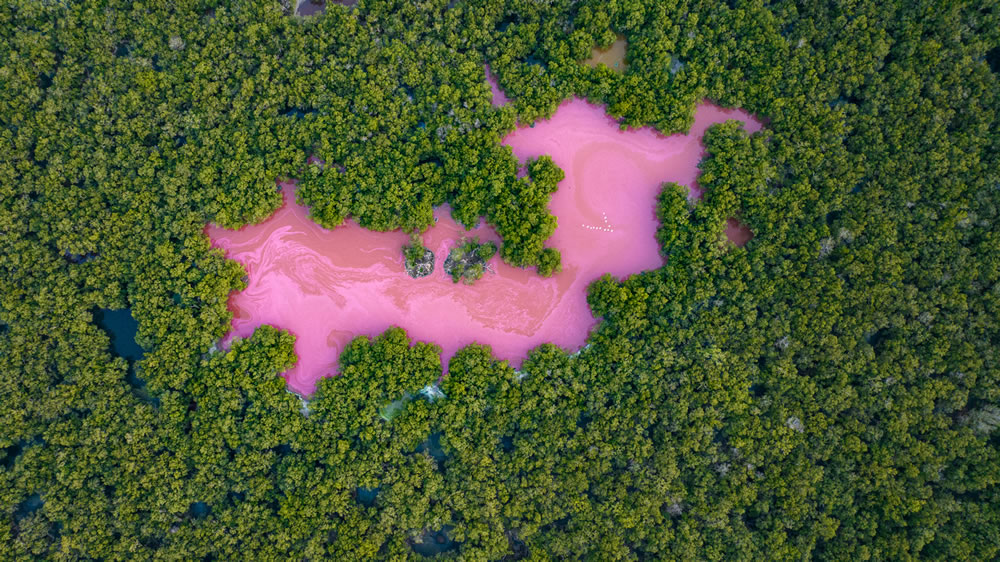
#4. Landscapes: Highly Commended – Between Ancient and Modern Lights by Aaron Ruy G. Musa
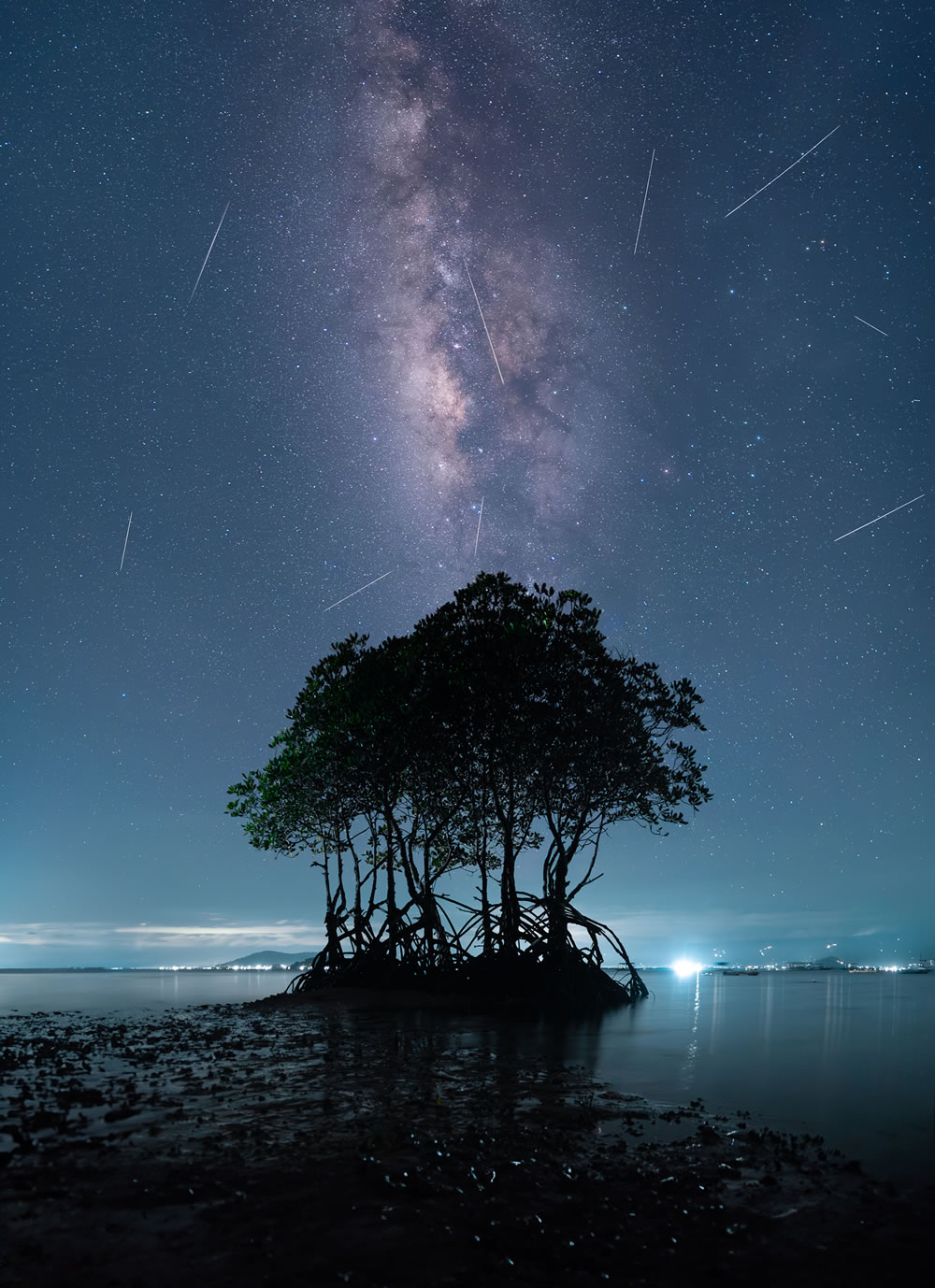
#5. Landscapes: Highly Commended – Natural Design by Jorge Silva
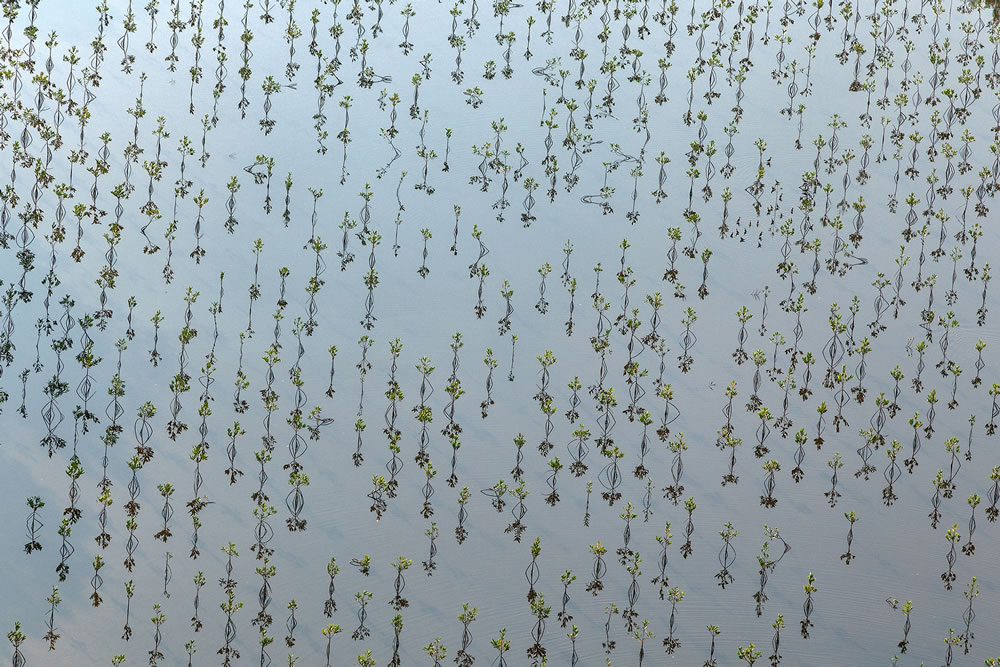
#6. Landscapes: Highly Commended – Dawn’s Serenade by Aaron Ruy G. Musa
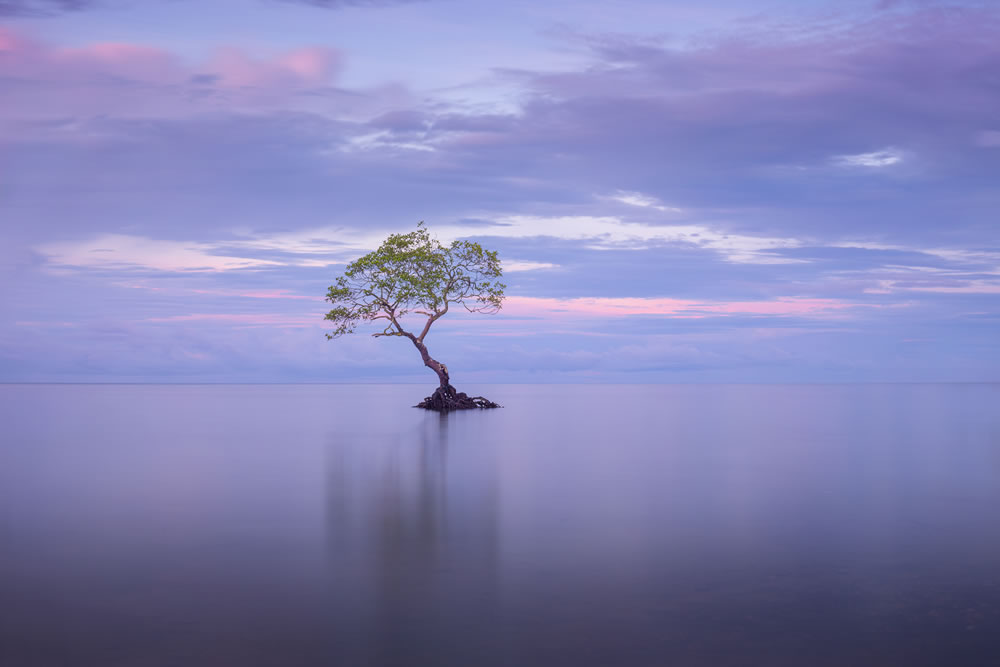
#7. Landscapes: Highly Commended – Surrounded by Nature by Shyjith Onden Cheriyath
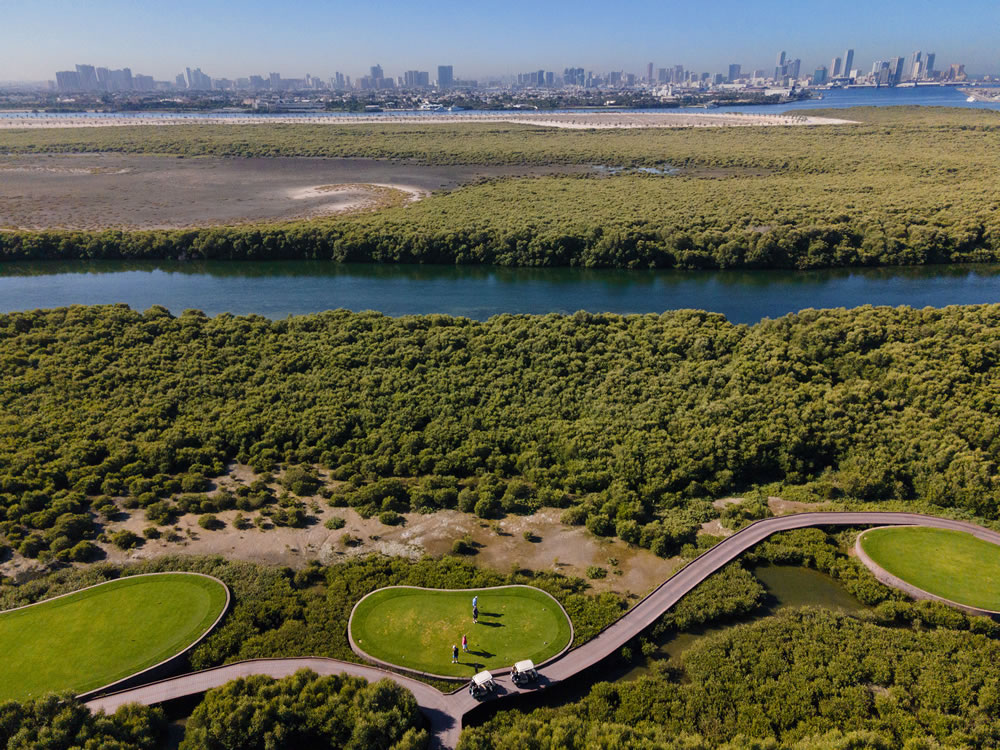
#8. Landscapes: Highly Commended – Courtship by Shane Gross
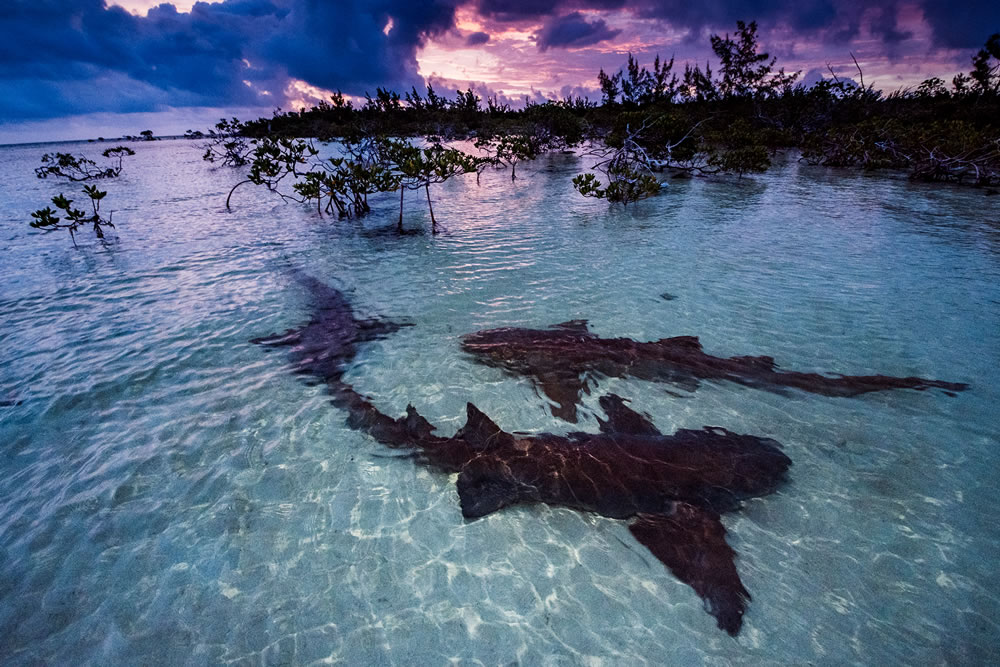
#9. Wildlife: Winner – Hiding in Plain Sight by Chien Lee
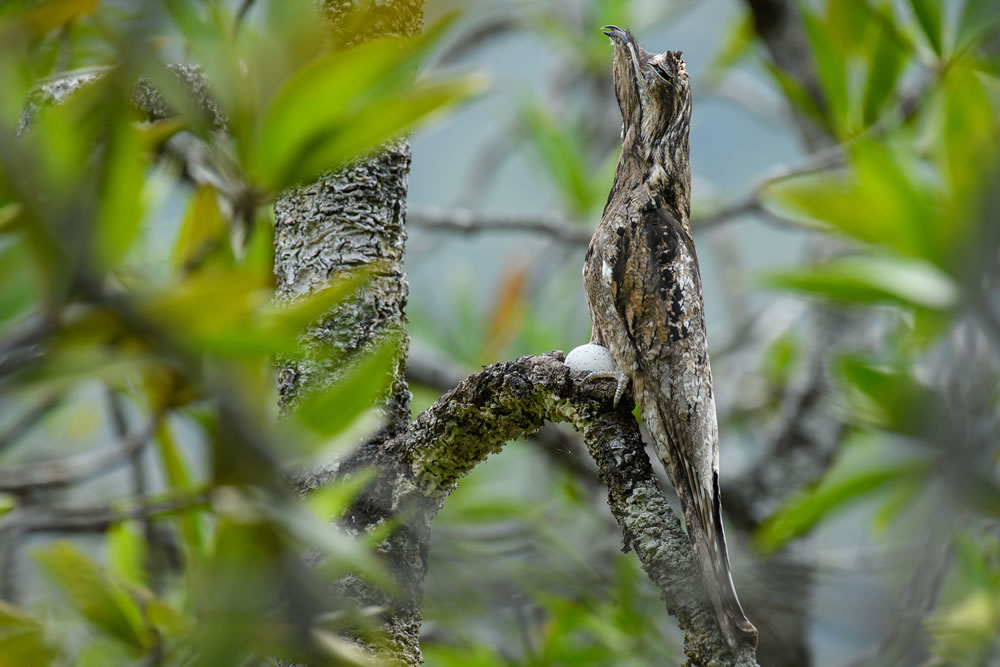
Utría National Park, located on Colombia’s Pacific coast in the Chocó region, is renowned for its stunning biodiversity. One of the highlights of the national park is the potoo, a fascinating and cryptic nocturnal bird. One striking feature of the potoo is its remarkable camouflage. During the day, it perches on tree branches, remaining perfectly still, with its cryptic plumage resembling a broken tree branch or stump. This camouflage helps it blend seamlessly with its surroundings, making it exceptionally challenging to spot.
#10. Wildlife: Runner Up – Matin Nurse Sharks by Mark Ian Cook
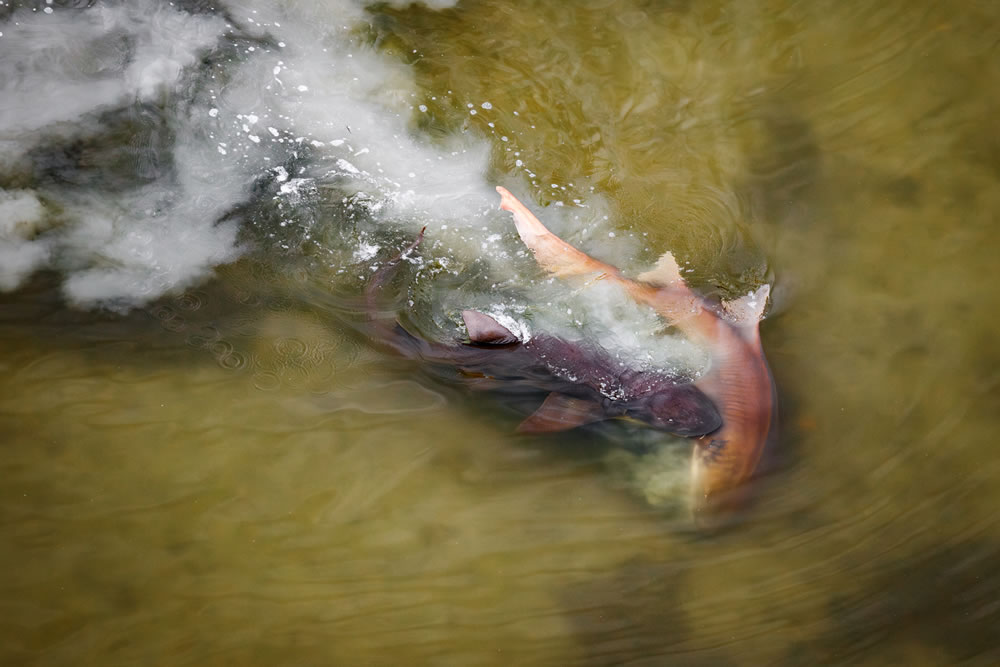
#11. Wildlife: Highly Commended – Gathering by Shyjith Onden Cheriyath
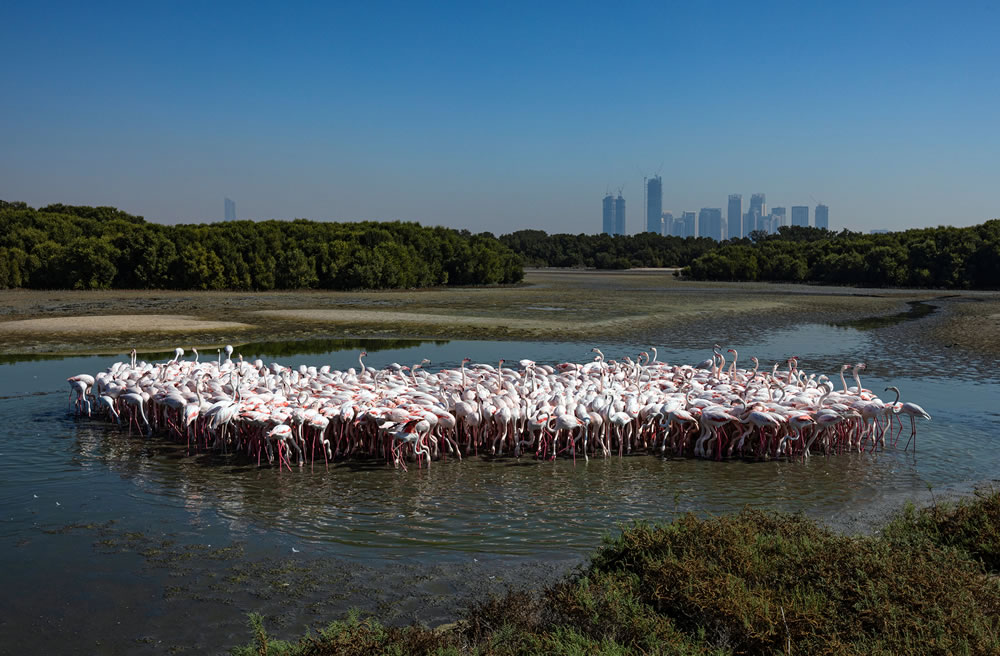
#12. Wildlife: Highly Commended – The Water is on Fire by Vidyasagar Hariharan
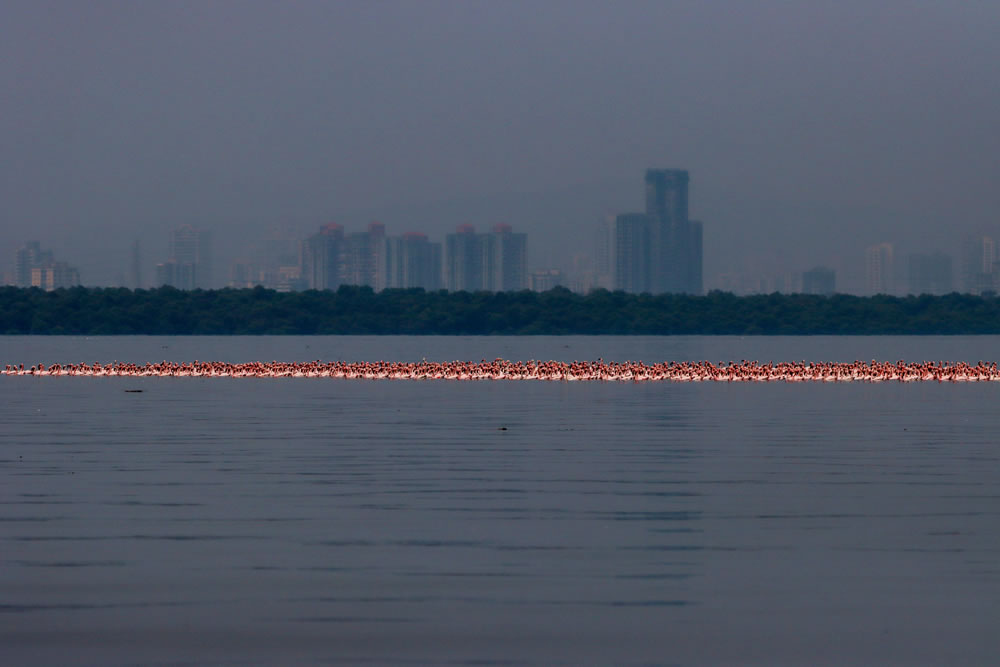
#13. Wildlife: Highly Commended – To Theft of Fish by Kaveesha Madhubhashana
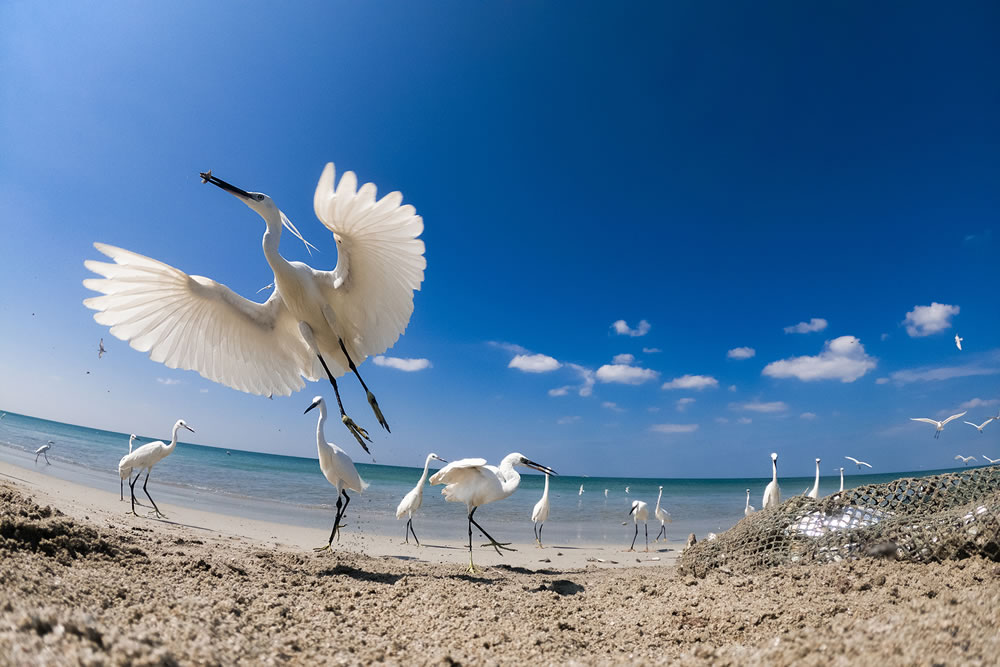
#14. Threats: Winner – The Theatre of Plastic by Emanuele Biggi
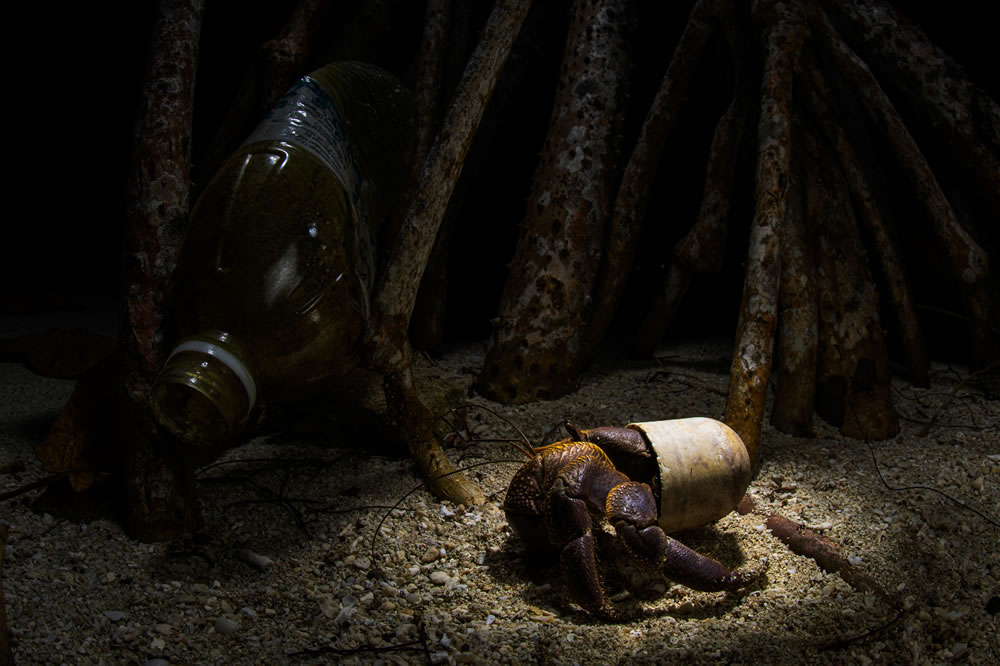
Hermit crabs rely on empty shells for shelter and protection. Plastic debris, including bottle caps and other discarded items, can sometimes resemble shells. Hermit crabs may attempt to inhabit these unnatural “shells,” which do not provide the necessary protection and can hinder their growth and survival.
Marine animals often mistake plastic debris for food. This can lead to ingestion, which can cause internal injuries, blockages, and malnutrition. Discarded fishing nets, lines, and other plastic debris can entangle and trap marine animals, leading to injury, drowning, or suffocation. Seabirds, seals, sea lions, and sea turtles are common victims of entanglement.
#15. Threats: Runner Up – Cleaning up the Coastline by Gerdie Hutomo
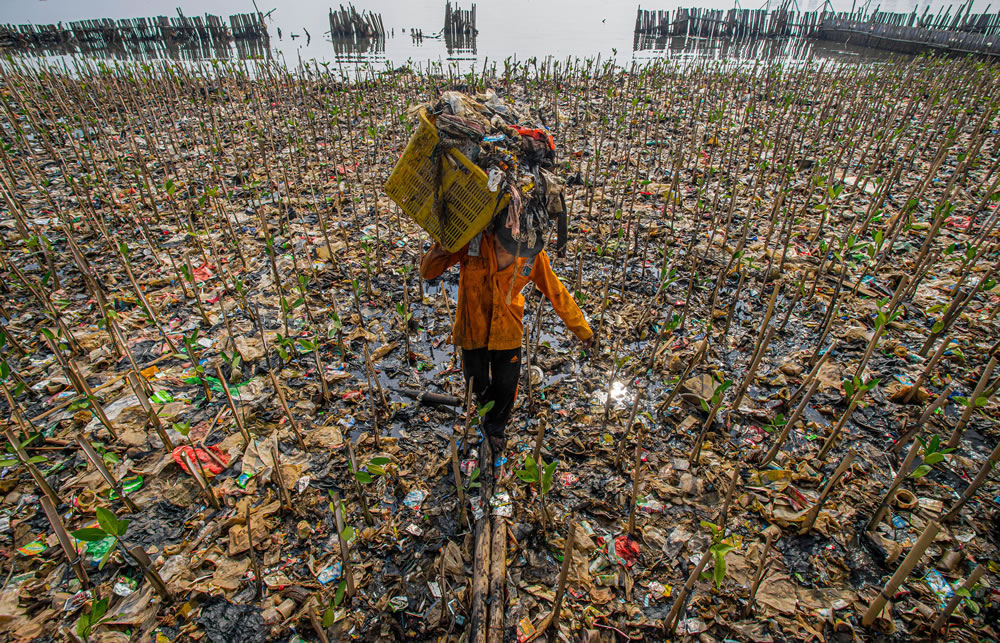
#16. Threats: Highly Commended – The Aftermath by Esteban Ernesto Dupinet Valencia
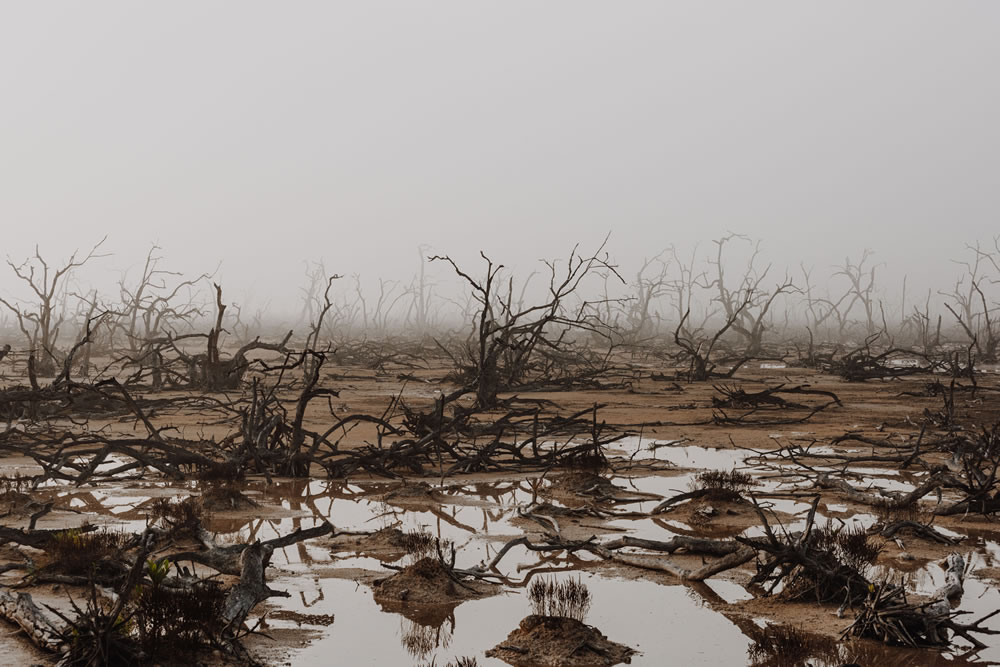
#17. Threats: Highly Commended – A Former Mangrove Choked with Plastic Waste by James Whitlow Delano
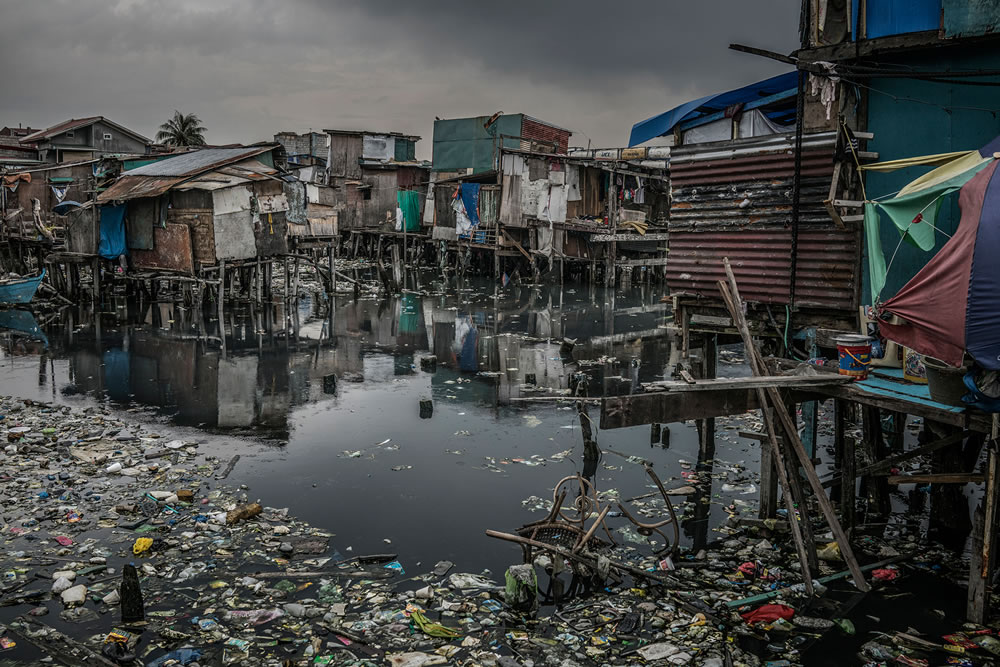
#18. Threats: Highly Commended – Wild & Free by Yordanis Mendez Segura
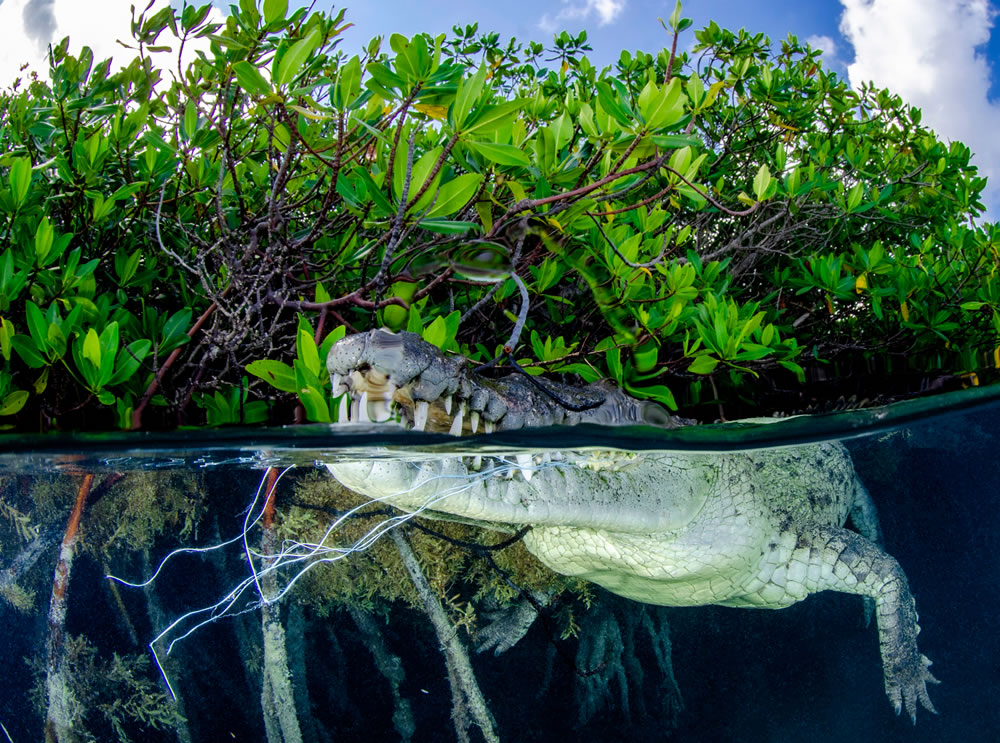
#19. Threats: Highly Commended – Black Dawn by Mannepuri Srikanth

#20. Threats: Highly Commended – The Window View – A Coexistence by Sreekumar Krishnan
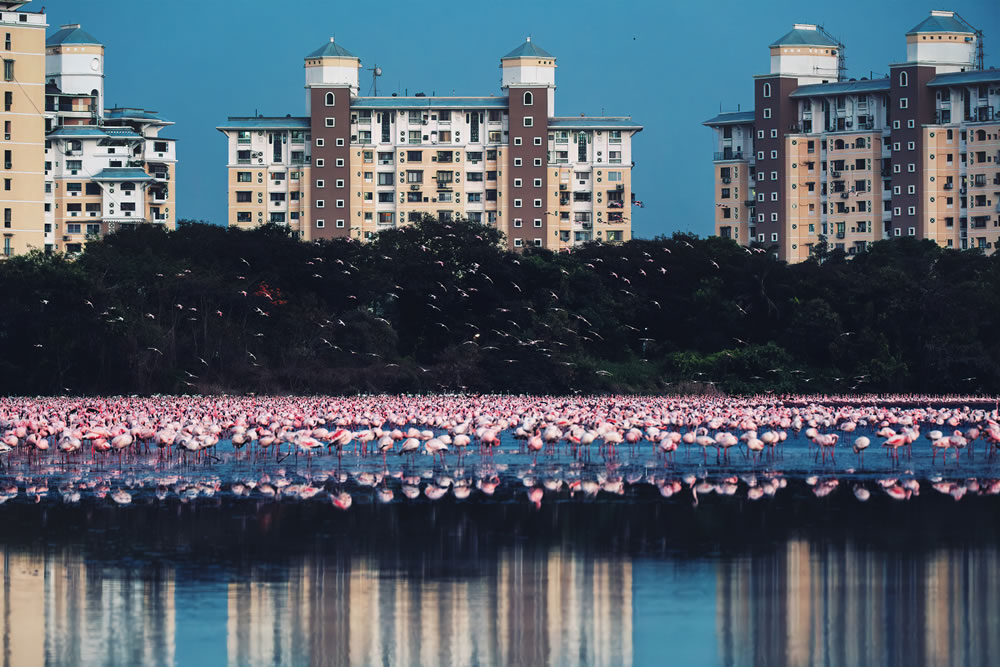
#21. Underwater: Winner – A Lemon’s Life by Anita Kainrath
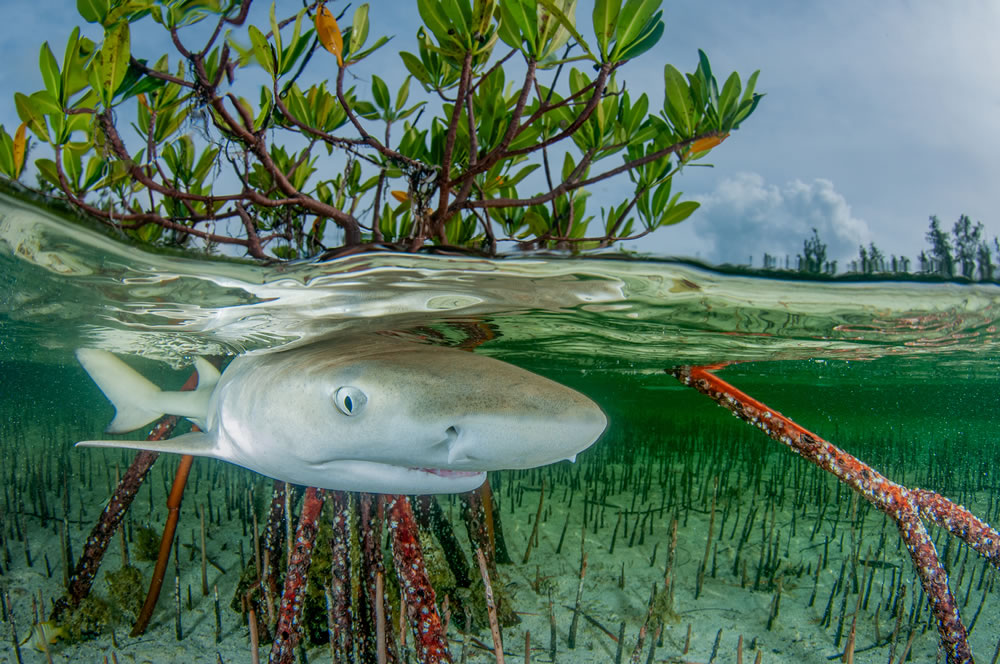
A juvenile lemon shark swims in shallow mangrove forests in the Bahamas. Lemon sharks are probably the most understood sharks in the world, thanks to over 30 years of studies by Bimini Shark Lab.
#22. Underwater: Runner Up – Forest Meets Reef by Brooke Pyke
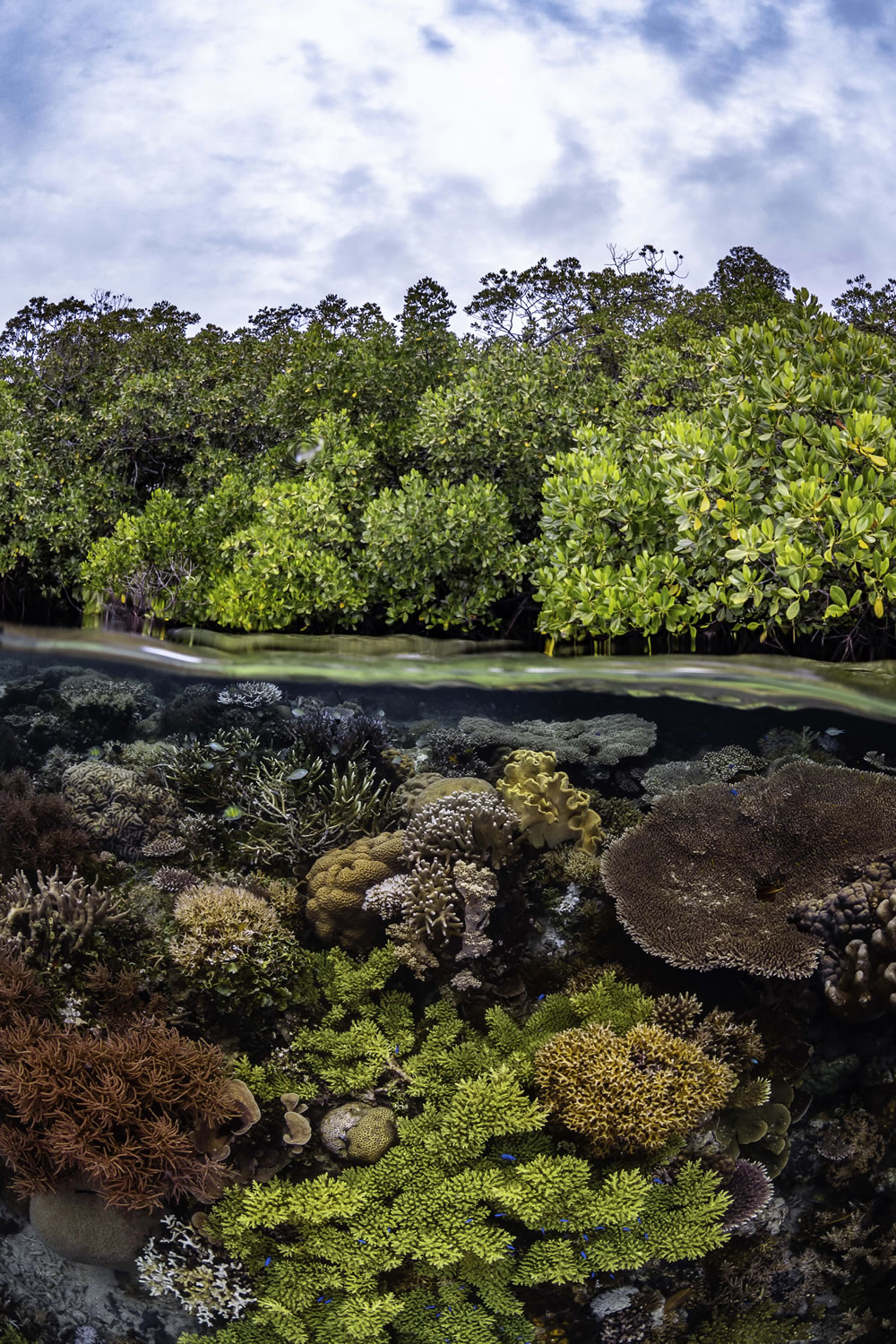
#23. Underwater: Highly Commended – Nursery by Shane Gross
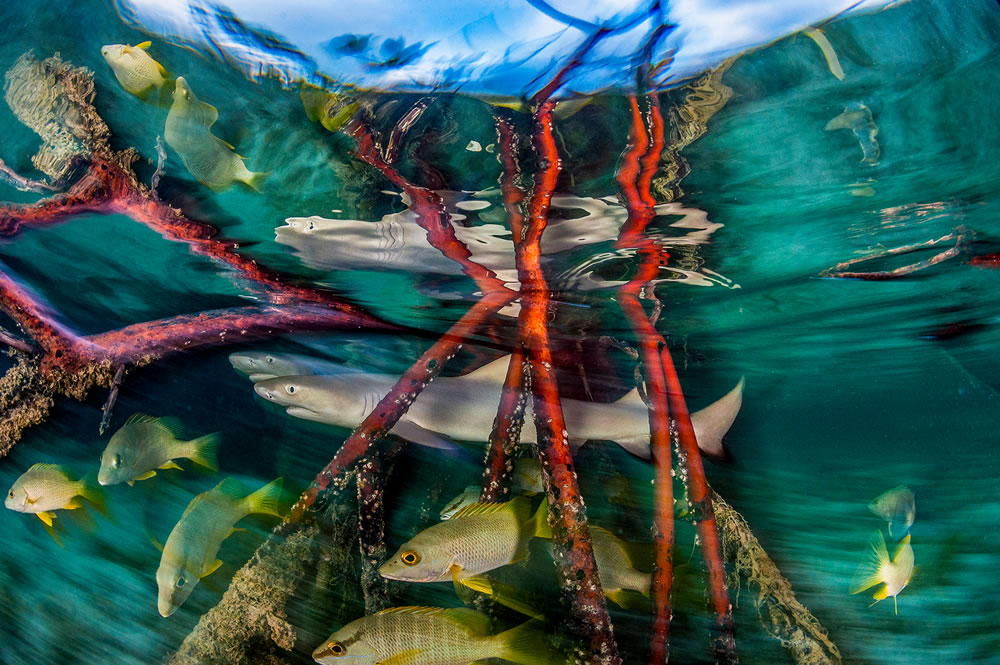
#24. Underwater: Highly Commended – Face to Face by Valentina Cucchiara
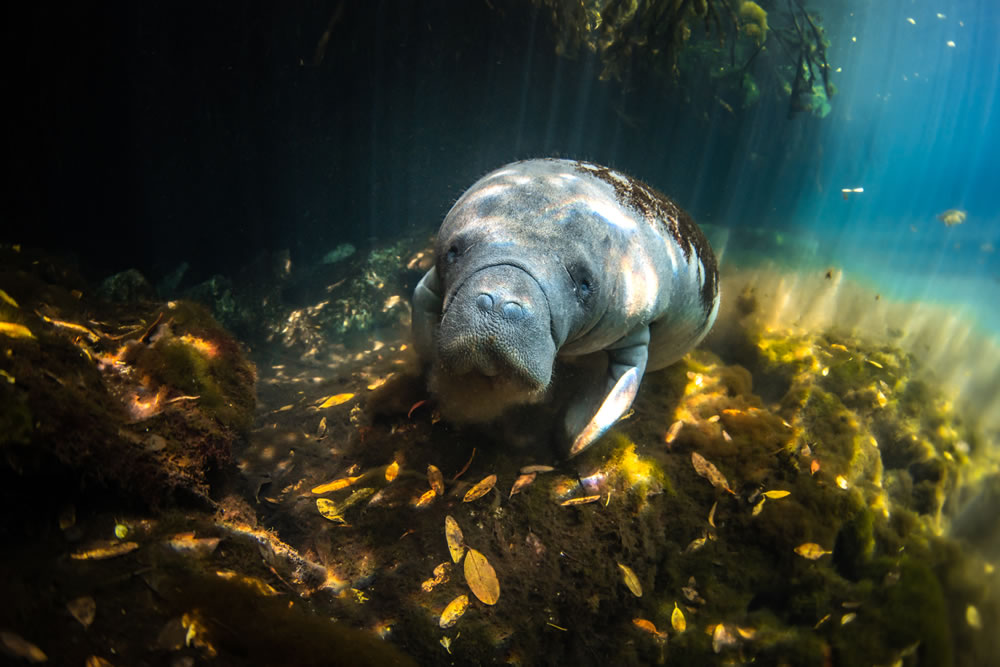
#25. Underwater: Highly Commended – Attachment by Puttarat Horwang
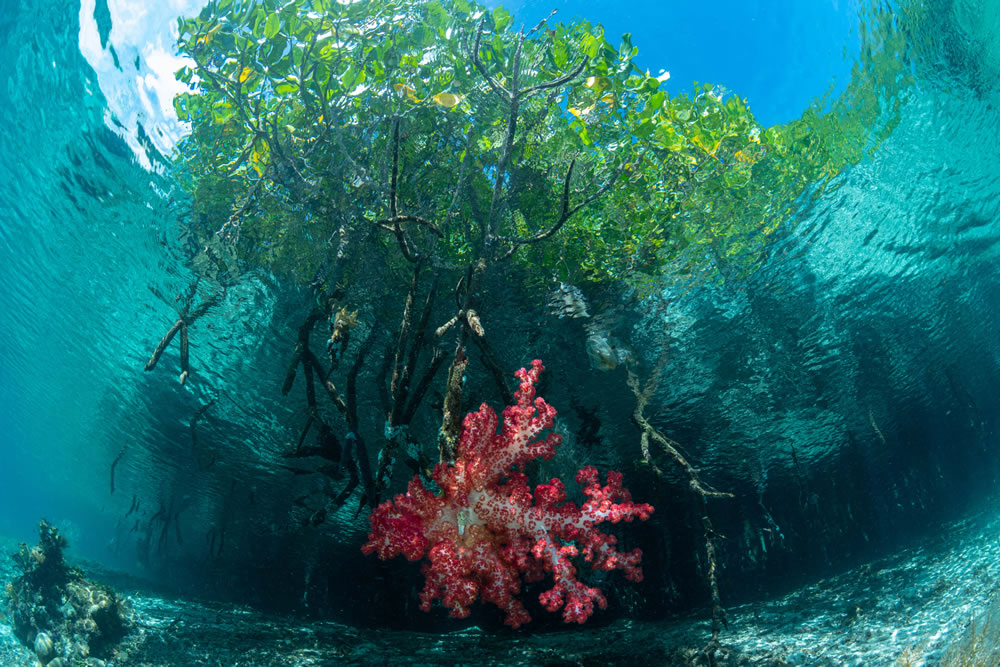
#26. Underwater: Highly Commended – Mangrove Heaven by Vinay Abraham Mathew
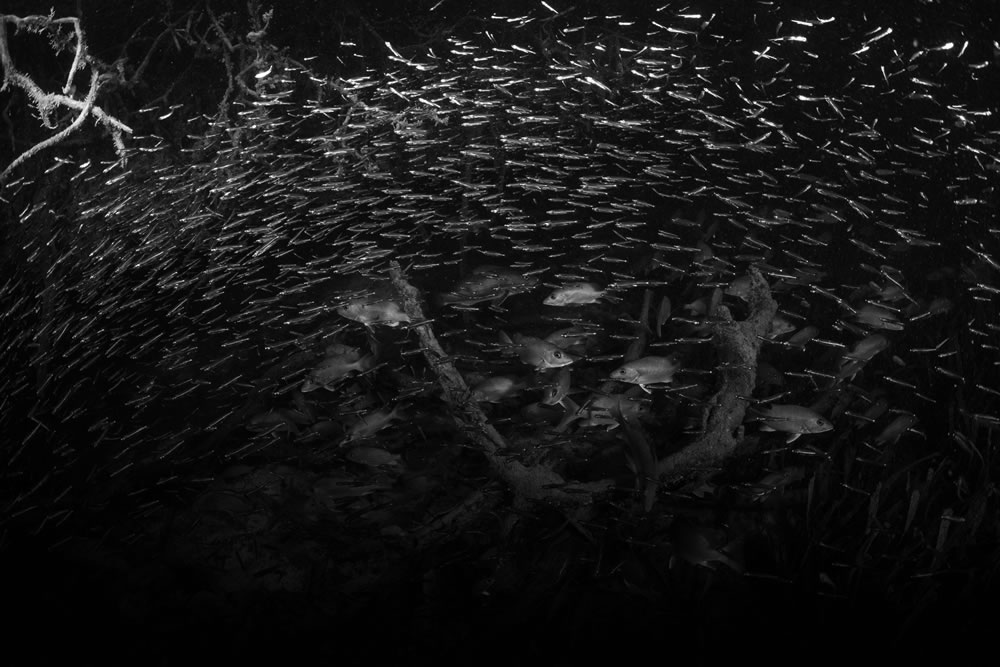
#27. People: Winner – Sephora the Clam Diver by Kris Pannecoucke
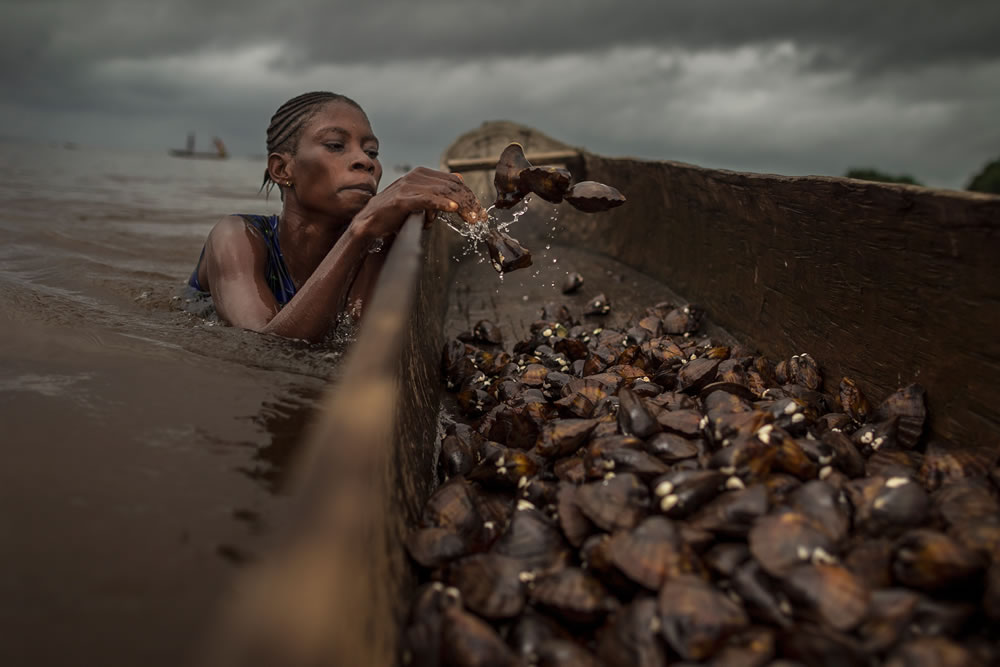
Between river, sea and land, the Mangrove Marine Park, a fragile nature reserve in Bas-Congo, is the kingdom of turtles, manatees and women who harvest clams.
Since the dawn of time, people have been diving in the mangroves in search of clams. At a depth of four meters, she carefully scans the ground with her hands until she finds clams. She grabs a handful and emerges, throws them into her canoe and disappears into the water again. She spends hours in the Congo River until her canoe is full or the tide comes in and her treasure disappears into inaccessible depths. The current is treacherous, in the Congo estuary it is so strong that sediments are carried up to 800 kilometers into the Atlantic Ocean. Séphora and dozens of other women dive for clams in the Parc Marin des Mangroves, a fragile nature reserve.
#28. People: Runner Up – In the Forest by Phan Thi Khanh
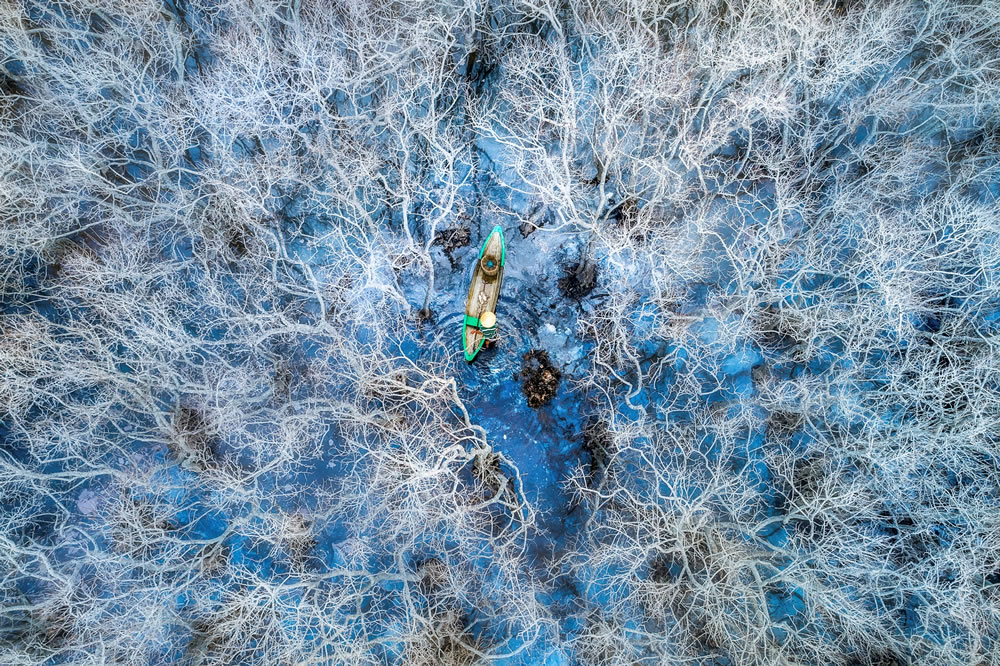
#29. People: Highly Commended – Mwals by Muhammad Mostafigur Rahman
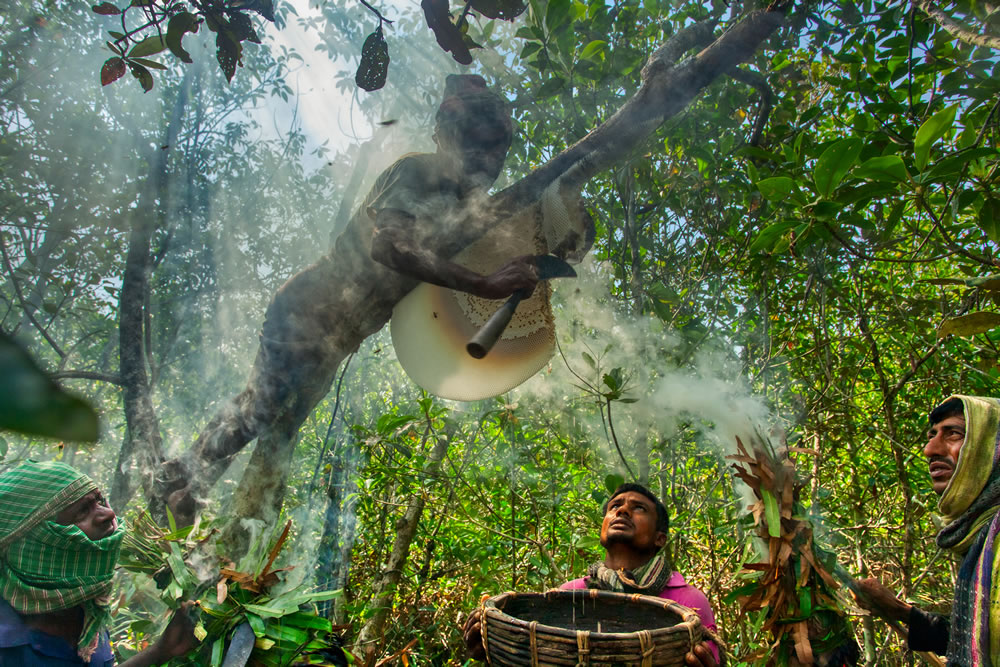
#30. People: Highly Commended – Planting Mangroves Forest by Kim Cuong Nguyen Trang
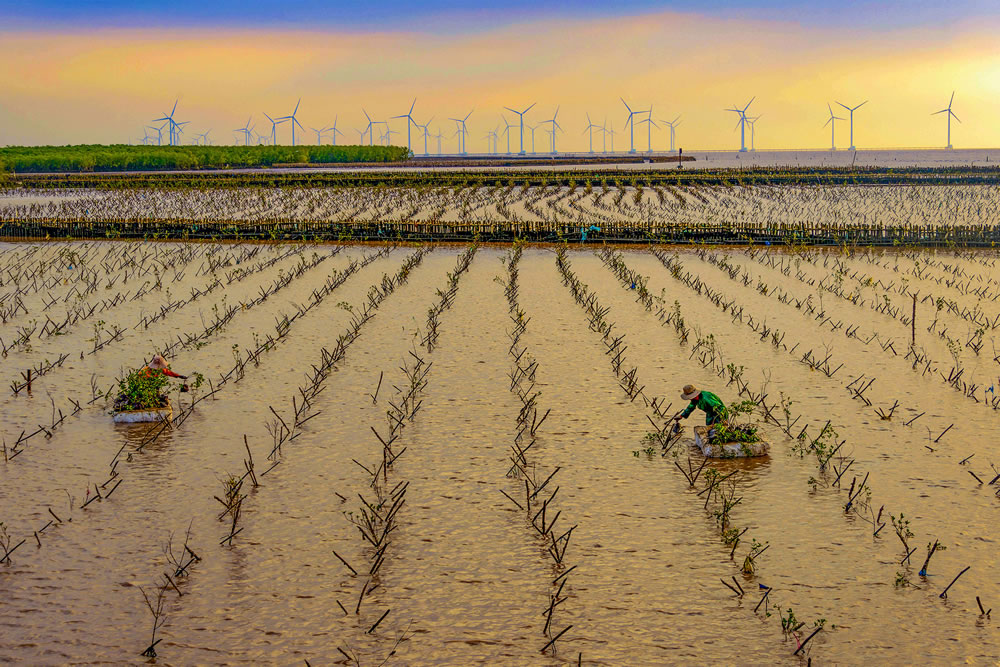
#31. People: Highly Commended – Leading Life by Zakir Hussain Chowdhury
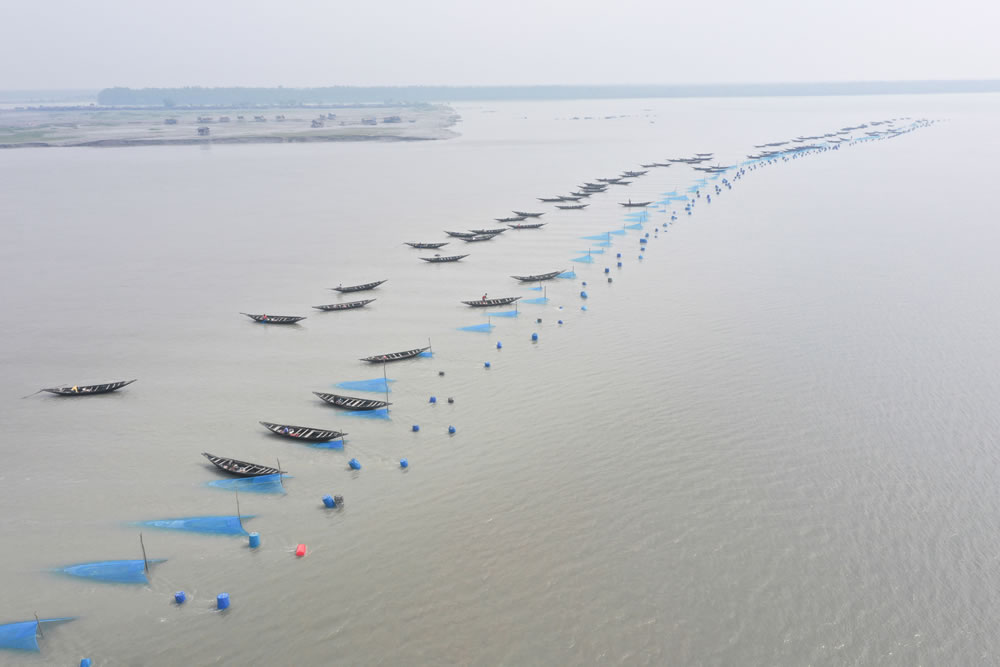
#32. People: Highly Commended – Hope by Sergio Izquierdo
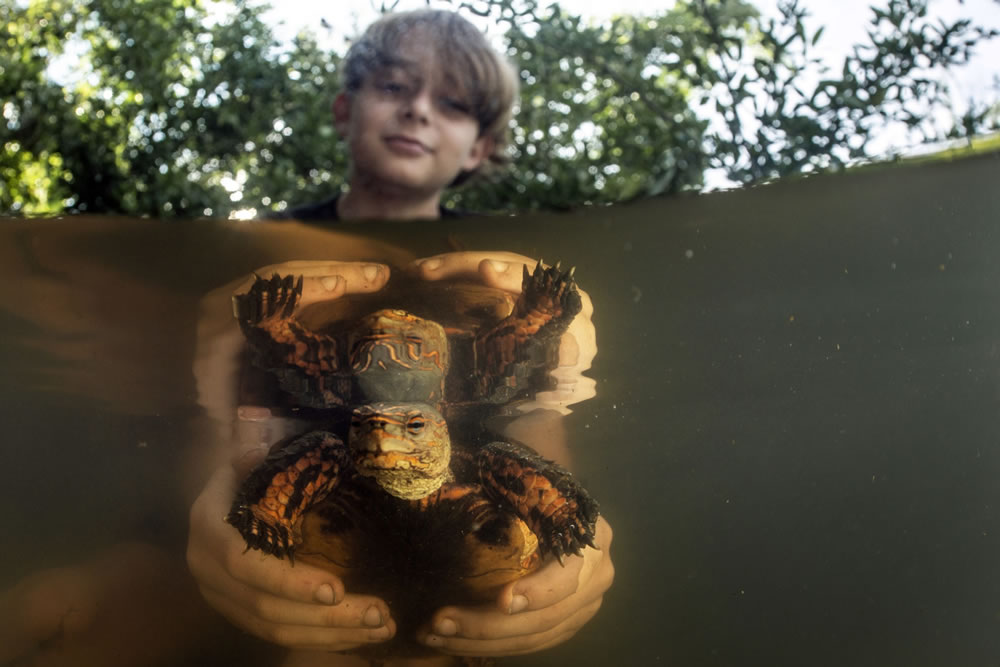
#33. Conservatin Stories: Winner – The Blue Fig, Mohammad Rakibul Hasan
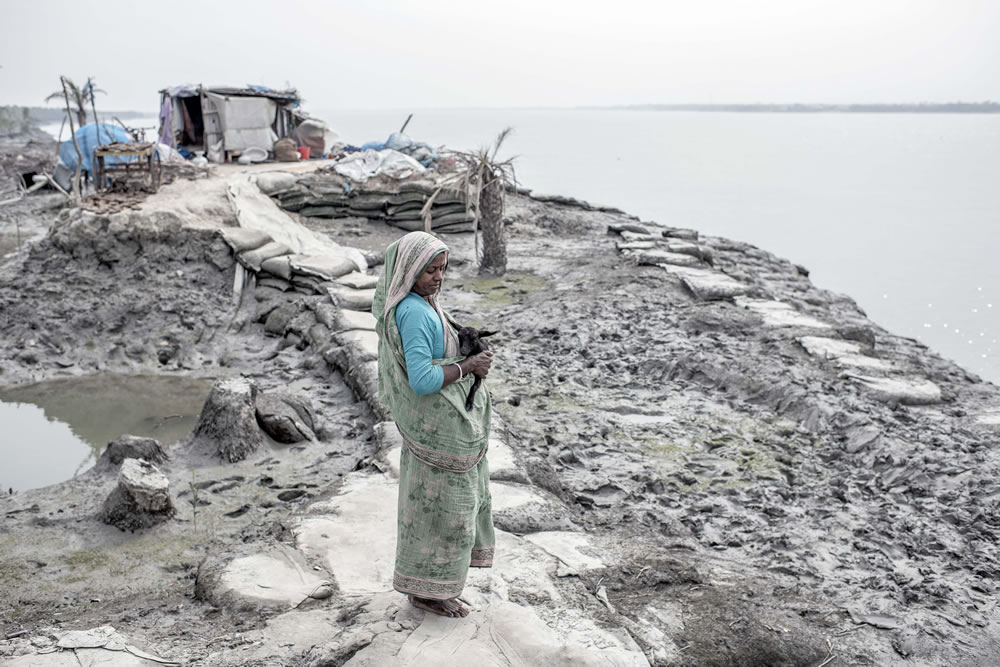
The Sundarbans, which means “beautiful forest”, is one of the most vulnerable areas in the country to the impacts of climate change. It is one of the wildest places left on Earth: a biodiversity hotspot and a complex tidal network of waterways and islands that is only accessible by boat. It is a delicate ecosystem that is under pressure from human development and the climate crisis, which is threatening the ecology of the Sundarbans.
Sea level rise is one of the most significant threats to the Sundarbans forest.<br/>The impacts of climate change on the Sundarbans forest are impacting the lives of people in the surrounding areas. The forest is a significant source of livelihood for many people in the region, who rely on it for fishing, agriculture, and other activities. As the forest is damaged by sea level rise and extreme weather events, these people will also be affected by food and water insecurity and the loss of their homes and livelihoods.
#34. Conservatin Stories: Runner Up – Stewards of the Mangroves by Jason Florio
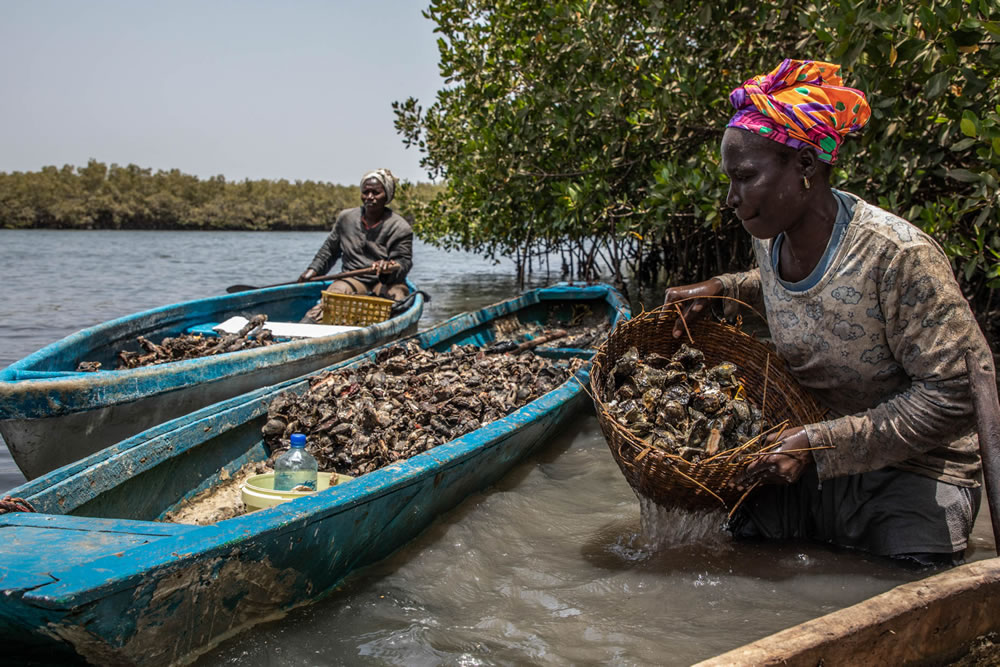
The River Gambia’s mangroves are crucial to its ecosystem, and benefit the local women who collect oysters. The wetlands are an important carbon sink, storing up to 10 times more carbon than forests. The TRY Oyster Women Association plays a vital role in protecting the wetlands, educating members to preserve the mangroves and harvest sustainably, as well as engaging in reforestation, planting 50,000+ mangrove seedlings – encouraging the women to consider themselves stewards of the mangroves.
#35. Young Mangrove Photographer of the Year: Eye Contact by Katanyou Wuttichaitanakorn
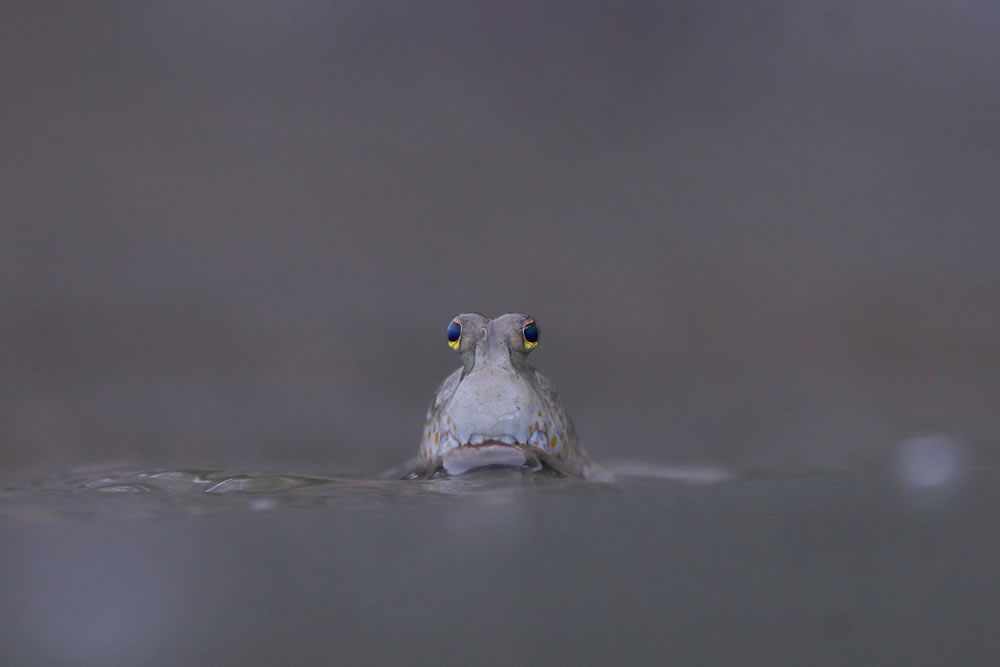
A baby Golden-spotted Mudskipper snapped on the edge of a mangrove in Samut Sakorn province, Thailand. Mudskippers are an amphibious fish and can use their pectoral fins to “walk” on land.

